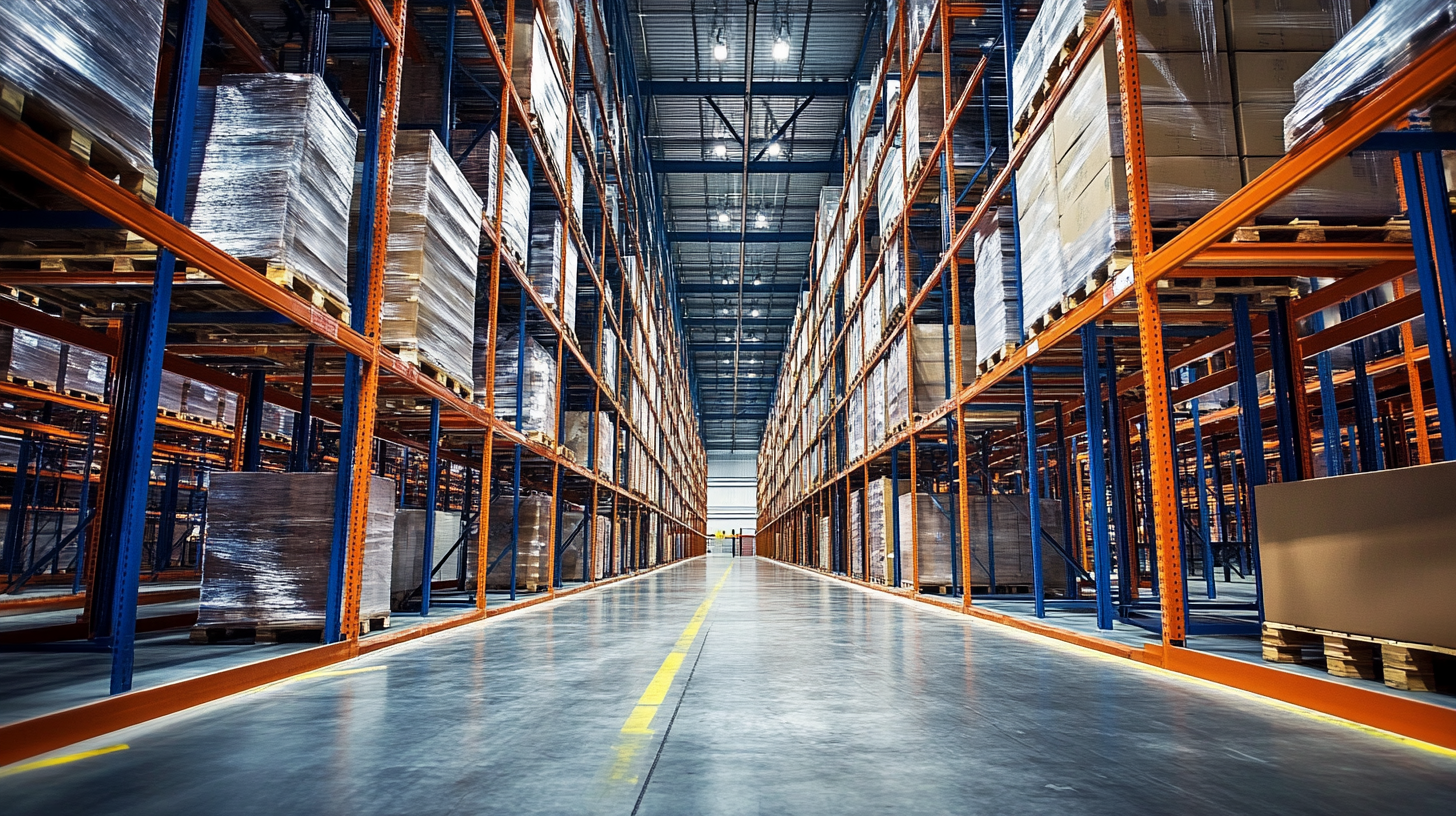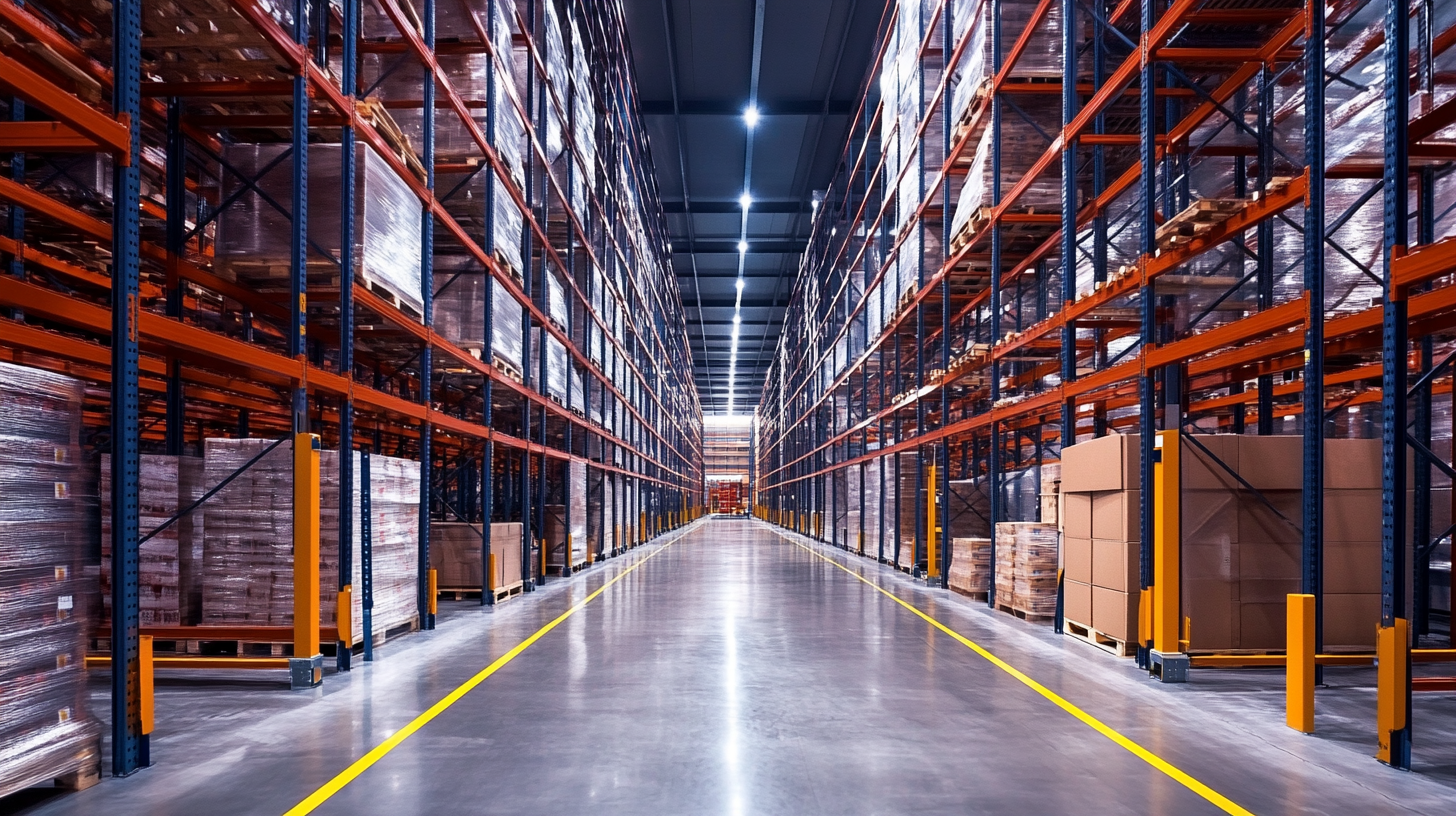Future Warehouse Racking Trends in 2025 and Its Advantages for Global Buyers
As we approach 2025, the warehouse racking industry is poised for significant transformation driven by advancements in technology and changing market demands. According to a recent report by MarketsandMarkets, the global warehousing and storage market is expected to reach $668 billion by 2025, highlighting the critical role of efficient warehouse racking systems. The rise of e-commerce and the increasing focus on supply chain optimization have underscored the importance of innovative warehouse racking installation to enhance storage capacity and operational efficiency.

Furthermore, the push towards sustainability is leading to the adoption of eco-friendly materials and processes, significantly influencing warehouse design trends. This blog will explore the emerging trends in warehouse racking for 2025 and discuss their advantages for global buyers, providing insights into how these innovations can meet the evolving needs of the industry.
Future Innovations in Warehouse Racking Systems for Enhanced Efficiency
In 2025, innovations in warehouse racking systems are set to redefine operational efficiency for global buyers. According to a recent report by the Warehousing Education and Research Council (WERC), automation technologies, including robotic racking systems, are expected to increase warehouse throughput by up to 30%. By integrating automated guided vehicles (AGVs) with advanced racking systems, warehouses can enhance inventory management accuracy and significantly reduce pick times, leading to streamlined operations.
Moreover, the shift towards smart racking systems equipped with IoT sensors is gaining momentum. Data from Logistics Management indicates that companies implementing smart racking can reduce inventory holding costs by as much as 20% while improving stock visibility. These systems allow real-time tracking of inventory levels and locations, enabling businesses to respond swiftly to supply chain fluctuations. As global buyers prioritize agility and responsiveness in logistics, the adoption of innovative racking solutions is crucial for maintaining a competitive edge in the marketplace.

Sustainability in Warehouse Racking: Eco-Friendly Materials and Practices
As we approach 2025, the focus on sustainability in warehouse racking is becoming increasingly crucial for global buyers. Eco-friendly materials are setting the standard in logistics, pushing companies to adopt practices that minimize their environmental impact. The use of recycled steel, for instance, not only reduces waste but also decreases the carbon footprint associated with new material production. Additionally, modular racking systems that can be easily expanded or repurposed further contribute to resource efficiency, allowing warehouse operators to adapt to changing needs without the necessity of complete overhauls.
Moreover, manufacturers are embracing innovative designs that enhance energy efficiency. Features such as improved airflow and better space utilization reduce heating and cooling costs, making eco-friendly racking not just a sustainable choice, but a financially savvy one as well. As more businesses recognize the advantages of sustainable practices, the demand for green warehouse solutions is expected to surge. By investing in sustainable racking systems today, companies can position themselves as leaders in the logistics sector, addressing both environmental concerns and operational efficiency in a rapidly evolving market.

Integrating Smart Technology in Warehouse Racking Solutions
As we look toward 2025, the integration of smart technology in warehouse racking solutions stands to revolutionize supply chain operations. The global warehouse automation market is projected to reach $30 billion by 2025, driven by advancements in smart technologies such as IoT, AI, and machine learning. These technologies not only optimize inventory management but also enhance the precision of stock retrieval processes. For instance, automated storage and retrieval systems (AS/RS) can reduce labor costs by up to 50%, while improving retrieval accuracy by approximately 99%.
Moreover, the application of data analytics within smart racking systems allows for real-time inventory tracking and predictive maintenance, ultimately minimizing downtime. According to a report by Grand View Research, the demand for smart logistics solutions is expected to grow significantly, with a CAGR of 10.8% from 2020 to 2027. This seismic shift enables global buyers to make data-driven decisions, improve operational efficiencies, and respond more rapidly to market changes. The adoption of technologies such as RFID and automated guided vehicles (AGVs) ensures that warehouses not only meet current demands but are also prepared for future challenges in the evolving landscape of logistics.
Future Warehouse Racking Trends in 2025
Optimizing Space Utilization: Vertical and Modular Racking Trends
As we look ahead to 2025, the trends in warehouse racking systems are shifting towards optimizing space utilization through vertical and modular designs. Vertical racking systems allow warehouses to maximize their storage capacity by utilizing height rather than just floor space, potentially increasing storage efficiency significantly. Additionally, modular racking solutions offer flexibility, allowing for easy reconfiguration as the needs of businesses evolve.
According to recent industry reports, the Stillage Cage market is expected to grow from $125 million in 2022 to $185 million by 2030, with a compound annual growth rate (CAGR) of 5.5% from 2024 to 2030. This growth is indicative of a larger trend towards enhanced space management strategies within warehouses, reflecting an increased demand for more efficient storage solutions.
**Tips:** To maximize the benefits of vertical and modular racking systems, businesses should regularly assess their inventory needs and consider implementing automated inventory management systems. This will not only optimize space but also improve overall operational efficiency. Regular training for warehouse staff on the best practices in racking can further ensure safety and productivity in these optimized environments.
Advantages of Automated Racking Systems for Global Supply Chains
As we approach 2025, the trends in warehouse racking are shifting towards automated systems, particularly in the context of global supply chains. According to a report by Grand View Research, the global warehouse automation market is projected to reach USD 30.7 billion by 2026, growing at a CAGR of 14.5%. This surge is driven by the increasing need for efficiency and agility in logistics, making automated racking systems not just an improvement but a necessity for modern operations.
Automated racking systems offer several advantages that are becoming essential for global buyers. Firstly, these systems enhance space utilization significantly, allowing warehouses to maximize their storage capacities. A study by the Warehousing Education and Research Council found that companies employing automated systems reported a 30-50% improvement in storage density. Secondly, automated racking reduces labor costs and minimizes human error, delivering higher accuracy in inventory management. This precision is critical in today’s fast-paced market, where a mere mistake can lead to substantial financial losses. As global supply chains continue to evolve, automated racking stands out as a strategic investment, providing a blend of efficiency and reliability that is set to define the future of warehousing.
Future Warehouse Racking Trends in 2025 and Its Advantages for Global Buyers - Advantages of Automated Racking Systems for Global Supply Chains
| Feature | Description | Advantage | Projected Impact (2025) |
|---|---|---|---|
| Automated Guided Vehicles (AGVs) | Self-driving vehicles used for materials handling. | Increased efficiency and reduced labor costs. | 30% productivity increase. |
| Dynamic Racking Systems | Storage systems that adjust based on inventory levels. | Maximizes space utilization and flexibility. | 20% more space efficiency. |
| Cloud-Based Warehouse Management | Remote access management of warehouse operations. | Real-time tracking and error reduction. | Improves accuracy by 25%. |
| Robotic Picking Systems | Robots used for selecting and packing items. | Enhanced speed and reduced human error. | Increase picking speed by 40%. |
| IoT Integration | Utilization of Internet of Things for real-time data. | Improved inventory visibility and management. | Reduces stockouts by 50%. |

